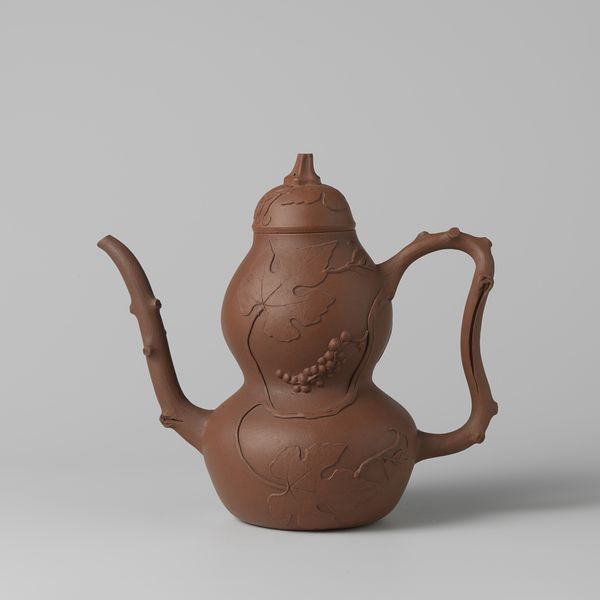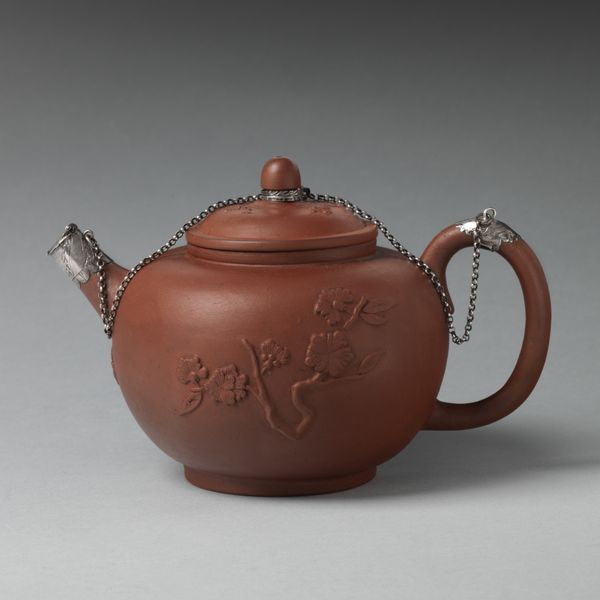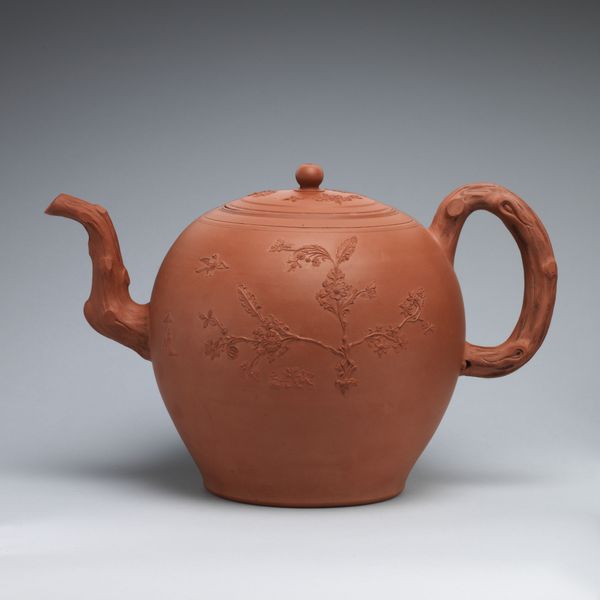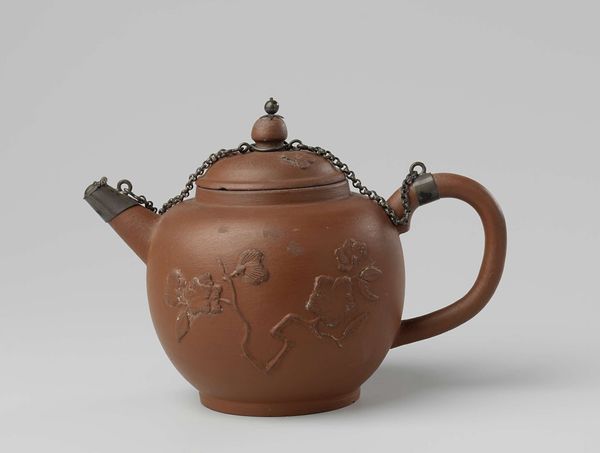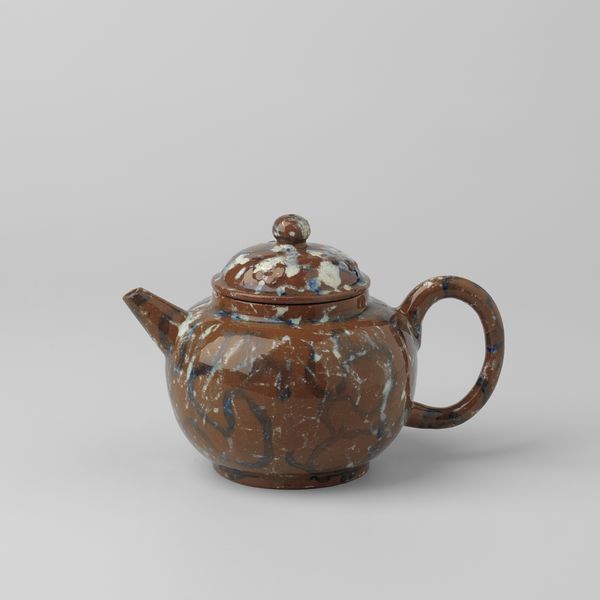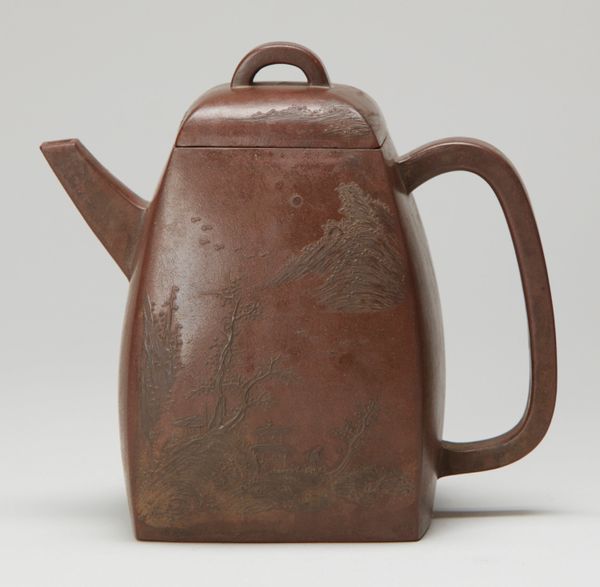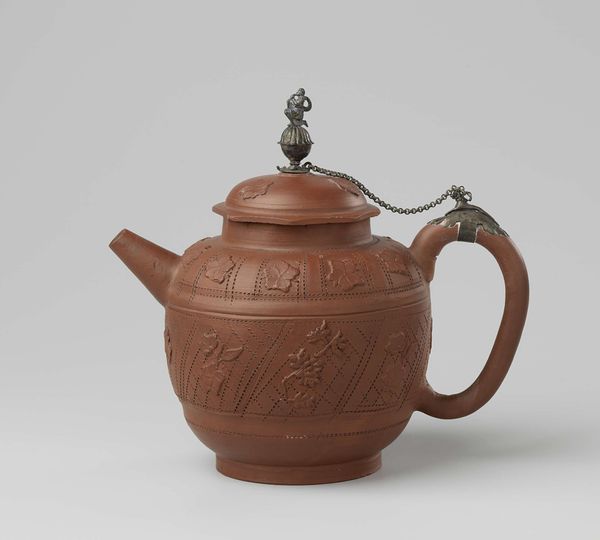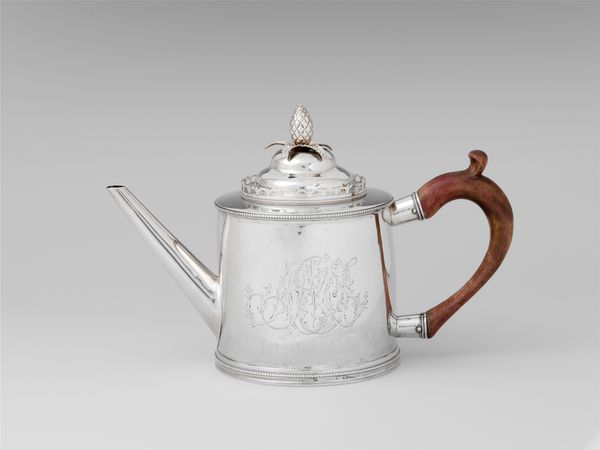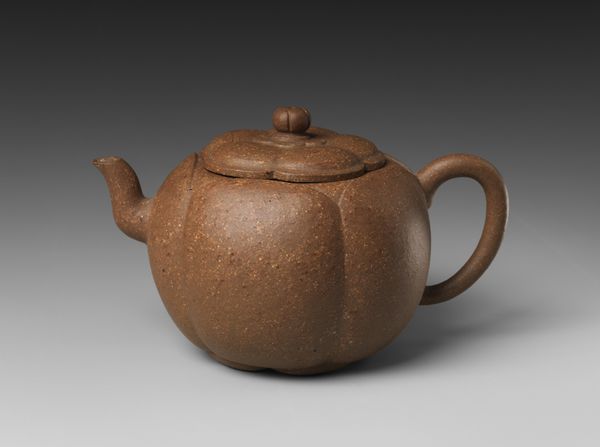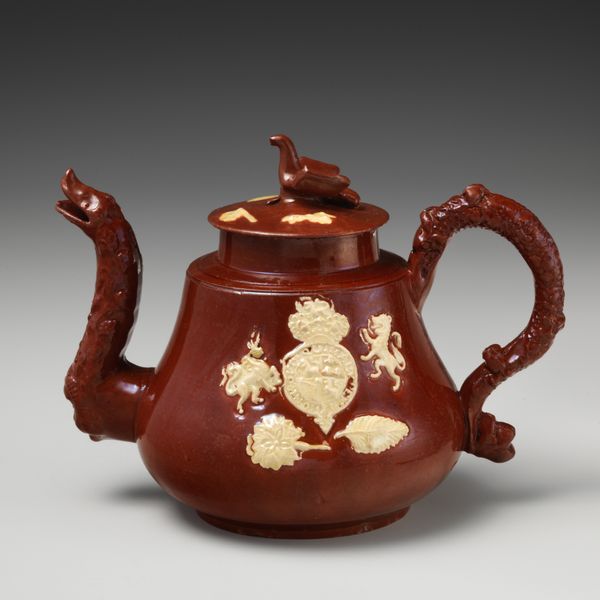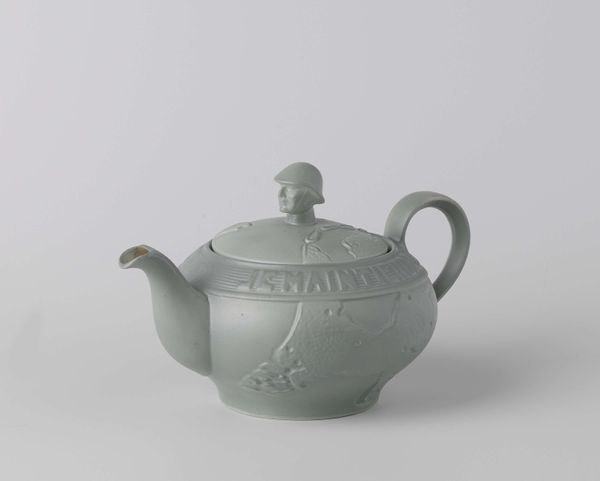
ceramic, earthenware
#
asian-art
#
ceramic
#
figuration
#
earthenware
#
decorative-art
Dimensions: height 3 cm, diameter 6 cm
Copyright: Rijks Museum: Open Domain
Editor: So here we have an 18th-century earthenware teapot. It's decorated with prunus sprays, birds and a butterfly. It’s anonymous, held in the collection of the Rijksmuseum. What a perfectly humble vessel! I wonder about its symbolism… what stands out to you in this piece? Curator: It breathes a certain delicate air, doesn't it? Makes you think of quiet mornings and steaming tea... To me, the appeal is how function dances with art. I’d bet this teapot wasn’t just about pouring tea; it was about enriching everyday life. Those sprigs of prunus? They speak of resilience, beauty that dares to bloom even in winter. And the butterfly – a flitting reminder of change, of the transient joy of life, wouldn't you agree? Editor: Yes, it does feel rather hopeful! The spout and handle, like stylized branches, give it such an organic feel too, almost as if it was found in nature. I suppose the natural decorative choices fit the overall presentation then? Curator: Precisely! And what’s tea, if not nature steeped in ritual? The artist, though anonymous, clearly felt a kinship with the world, crafting an object that celebrates simple pleasures. It is also earthenware – very delicate, for frequent use perhaps? More decoration than function? Editor: That's a great question to think about, especially within its cultural and art historical context. Thank you for this perspective! Curator: My pleasure! Art whispers when we listen with our hearts, wouldn’t you say? There is something innately pleasing about functional and aesthetic design merging into one piece. It adds layers, texture. A bit of life into even a morning routine.
Comments
No comments
Be the first to comment and join the conversation on the ultimate creative platform.
